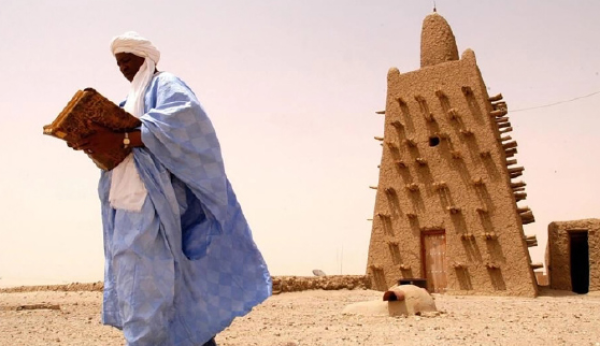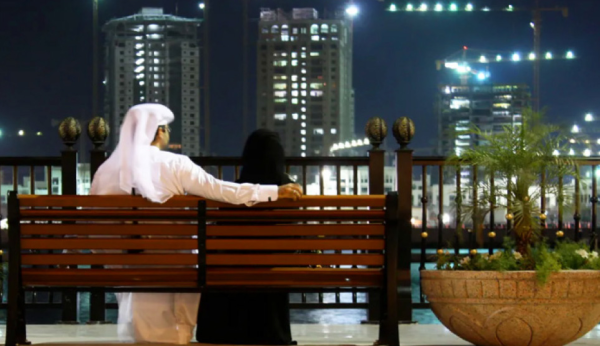Timbuktu: The Forgotten 'Light House' in Africa
Timbuktu: The Forgotten 'Light House' in Africa
Timbuktu: The Forgotten 'Light House' in Africa

Behind the coin, there is always another story which never be told. This question is the key tool for deconstructing myths. Since a long time, the Africa has been narrated by ‘Others’ and we are accustomed to digest this diplomatic narrative. A notable English author, Joseph Conrad writes a novel entitled, The Heart of Darkness in where the darkness hints to the darkness of Africa. So, something remains unrevealing still today!
In Europe, the beginning of 14th century is the new phase of its birth. The renaissance period turns into a new world to explore, rethink and it goes in peak in the 15th century in England. After Columbus’ America exploration (1492), the world never heard of America let alone Africa.
But the scenario was quite different. Africa enlightened nearby territories through its own spirit.
The beginning of the 14th century, nearby the Nizar River areas was the mystery in the West Africa in Mali. The city Timbuktu in Mali was the light house of the West Africa, and someone compared to the `Baitul Hikma’ (the house of wisdom) in Bagdad.
Timbuktu, the antient iconic city of the West African country, Mali was built in early 14th century. This city portrays a glorious history and intellectual portions not only the sub-Saharan territories rather the world of memoirs. Timbuktu stands on the focal point of the Trans-Sahara trade routes between the Sahara and the southern part has connected so many historical and cultural dimensions of various communities like the Arab, the Barbar, the Tuagreg communities etc. This melting city stood with fame over the world within its wisdom, trades and treasures.
In the root of 14th century, Mansa Musa, a legendary king of Mali empire ruled over (1312 –1337) which was the territorial peak point during his reign. Musa is known for his wealth and generosity. He is considered to be the wealthiest person in history. There are some tales regarding to him and one of the famous is that Mansa Musa visited to Mecca with 60,000 pilgrims along with him and each of them had 2 kilo golds that time! Mansa Musa donated wealth while crossing the Saharan regions. In his notable travelog Hajj to Mecca (1324), this story was mentioned.
Actually, Mansa Musa cherished to a noble mind, intellectual thoughts than other Mali empires. After completing Hajj, he invited Abu Ishaq Al Saheli (the notable architect in Andalusia) to Mali. Saheli visited Timbuktu and took the responsibility to put his hand on it.
The University of Timbuktu
Now in Mali, this University apparently the collective complexion in three institutions covering the mosque of Sankore, Djinguerber and Sidi Yahya. These scholastic institutions led to the versatile branches in academia that endured for many countries during the medieval period and mainly became iconic part producing a number of scholars and manuscripts teaching under the Maliki school of thoughts and jurisprudence. Many scholars from different territories came to visit and enriched themselves. Among other scholars, Muhamed Baghyogo, Ahmed Baba, Sheikh Mohammad Kati, and others were the most intellectual figures in that time.
The Djinguerber Mosque is considered the earliest mosque in Mali was built by the kin Mansa Musa as soon as returned from a pilgrimage to Mecca in 1327 and reconstructed between 1570-1583 by Imam Al Aqib ibn Mahmud, the Qadhi of Timbuktu in that time. According to Ibn Khaldun, one of the well-known resources for the 14th century in Mali. Al Sahili was given 12,000 mithkals (above 200 kg) of gold just for designing and building. The unique style mosque was made entirely of the earth plus organic materials such as fiber, straw and wood. The praying space in whole mosque nearly 2000 people. In 1998, UNESCO inscribed it as World Heritage Site.
The Sankore University is believed to be established by Mansa Musa and another narrative refers to build in rooted in 988 AD financing a Mainke (ethnic tribe in the West Africa) woman. At the very beginning, it was built as a mosque and Islamic teaching purposes in the Sudano-Sahelian architect monuments and later restored 1578-82 by imam Al Aqib ibn Mahmud ibn Umar, the chief Qadhi in Timbuktu. It became the significant learning point especially in Mansa Musa (1307-32) and the Asqia dynasty (1493-1591). The Sankore mosque was capable of housing 25000 students and had one of the largest libraries in the world having 400000-700000 manuscripts. At the very beginning the teaching curriculum based on the Quran and the Hadith then gradually spread out the different branches of knowledge in the golden age of Islam. Al Kabari, a scholar and professor helped to create the Quranic teaching curriculum and the Songhui empire developed Timbuktu as a center for trading and covered up it as a versatile educational curriculum. It itself housed 150 Quranic schools and become a major educational center in the Muslim world producing influential jurists, historians, chemists and theologists. In the peak time of 16th century, this madrasah educated 25000 students (nearly one-fourth population in Mali in that time) in 180 schools as well as became the center of crafting of manuscripts. The University of Sankore has been compared to other higher education universities during Muslim civilization such as Al-Azhar in Egypt, Al-Qayrawan in Tunisia, Al-Qarawiyyin in Morocco and Qurtuba University in Spain. It is also said to be a source of pride amongst African-Caribbean communities worldwide as it was a great intellectual institution dating back to civilizations in Mali, Ghana and Songhai particularly during the 12th to 16th centuries. Turban is the very symbolic mark of wisdom in the West Africa. On graduation day, students were given turbans symbolizing divine lights, wisdom and excellent moral conduct.
The Sidi Yahiya Mosque was named by its first imam Sidi Yahiya Al Tedelsi in 1440 under the direction of Sheikh Al Mokhled Hamalla of Timbuktu. It is located to the south of the Sankore Mosque. It was built with the expectation of a holy man who would emerge some forty years later as Cherif Sidi Yahia, who would then be chosen as the Imam. Much like the other two mosques, Sidi Yahia was also restored by Imam Al Aqib from 1577 to 1588.
Two esteemed scholars in Timbuktu are still respected and their appeal never decreased in the West African history. Mohammed Bagayogo (1523-1593) is a philosopher, theologian, Islamic grammarian. One of the think tanks in the Sankore University and spiritual veteran leader in Sidi Yahiya Mosque in Timbuktu. Many pupils and followers in Maliki jurisprudence were inspired by him. A significant amount of his scholastic writing has been preserved in manuscripts form at Ahmed Baba Institute in Timbuktu. Among his pupils, Ahmed Baba, Mahmud Kati, Abdur Rahman Sadi are still notable worldwide.
Ahmed Baba (1556-1627), more than 40 books author was considered the Mujaddid (the reviver) in the century. He was a Maliki Sunni great thinker, jurisprudent, Qadhi, historian, grammarian and also a great teacher in Sankore university. Like many scholars, Ahmed Baba naturally spent much of his time reading as he was writing and his personal library consisted of over 1,600 different volumes.
He was the last Chancellor of the University of Sankore, during the reign of Askia, the Great. Under this scholar’s observation, the university of Sankore enjoyed high prestige as the intellectual center of Africa. With a highly honour to him, The Ahmed Baba Institute in 1973 at Timbuktu in Mali stored 18000 manuscripts. It is the only public library in Timbuktu. Tarikh Al Fattash is considered one of the greatest the West African chronicles written in 17th century by Mahmud Kati, Timbuktu. The chronicle mentions the earlier Mali Empire. It and the Tarikh al-Sudan,(another 17th century chronicle chronicle) explicitly detail a history of Songhay, are together known as the Timbuktu Chronicles.
Another private manuscript library was founded in 2000 by Abdul Qader Haidaria named Mama Haidara Library, where stored approximately 22000 manuscripts.
Timbuktu began as a seasonal settlement and became a permanent settlement early in the 12th century. After a shift in trading routes, particularly after the visit by Mansa Musa around 1325, Timbuktu flourished from the trade in salt, gold, ivory and slaves. It gradually expanded as an important Islamic city on the Saharan trade route and attracted many scholars and traders. After visiting many scholars, it became more important than trading. This intellectual area in Africa was the honeybunch to the knowledge thirsty bees. Even Ibn Battuta, visited Timbuktu in Mansa Musa’s regime. He continued to explore parts of Mali. A town that was just beginning to flower as a center of Islamic scholarship and trade. Battuta was evidently not very impressed with Timbuktu - a city that would become great in the fifteenth and sixteenth centuries. Timbuktu is not the dark land, not the poor one to recognize rather it is the rich land with great heart.
The author of this article is student of Comilla University.
You May Add Comment Now.

Reply
 Hossain Kamal
Hossain Kamal 








